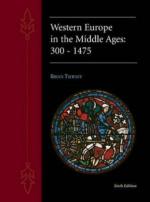|
This section contains 1,752 words (approx. 6 pages at 300 words per page) |

|
Defining the Medieval "Arts." During the Middle Ages definitions of the arts were based on assumptions about their value and their production. In general, the arts required specific abilities and training, and ranged from manual crafts (such as carpentry, sculpture, and painting) at the bottom to intellectual or academic labors (such as theology, poetry, and music) at the top. These latter arts were commonly classified as the "liberal arts." The sixth-century scholars Boethius and Cassiodorus developed the standard medieval division of the arts into the trivium and the quadrivium. The trivium became the most basic studies in the medieval schools and universities: grammar, rhetoric, and dialectics (logic). The quadrivium was the higher arts: arithmetic, geometry, astronomy, and music. While the "mechanical" arts—including painting, drawing, sculpting, and architecture—were considered inferior, mere crafts in Roman times, by the thirteenth century their status had been elevated in...
|
This section contains 1,752 words (approx. 6 pages at 300 words per page) |

|



